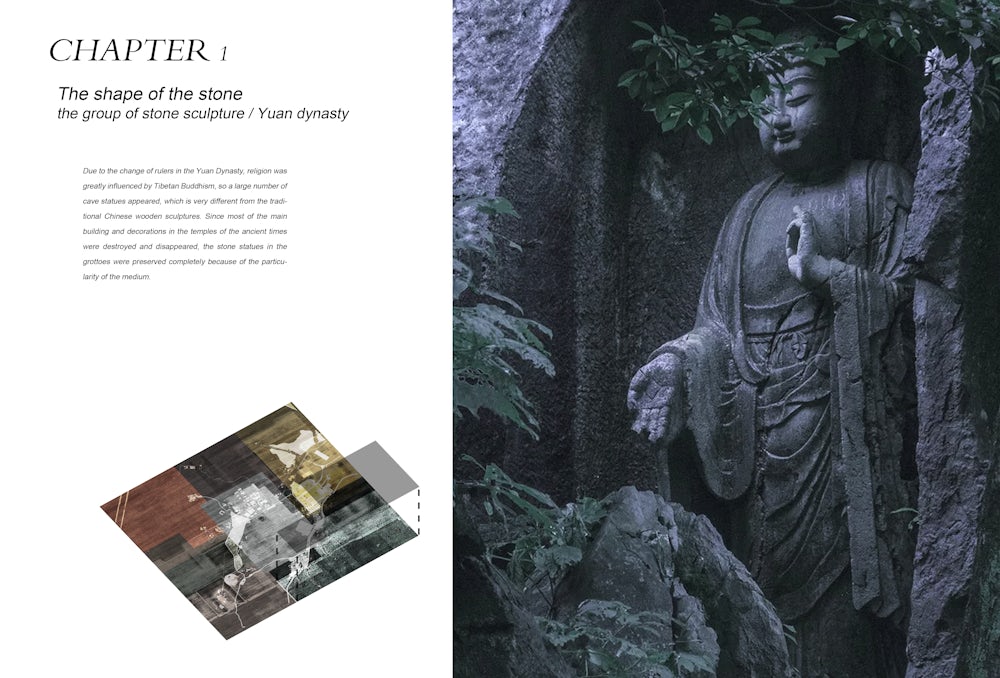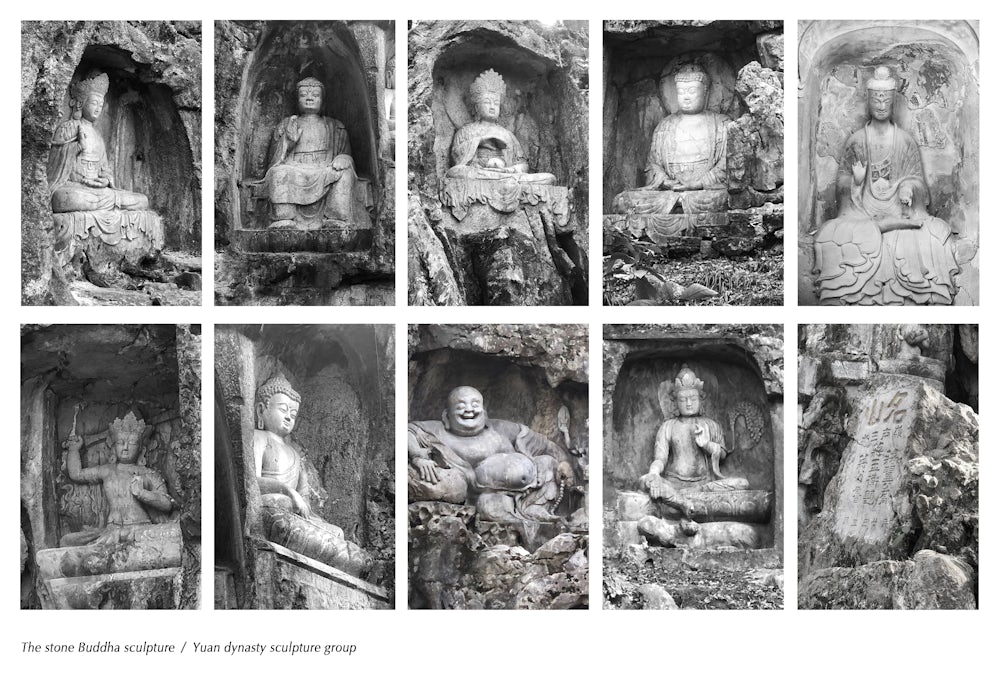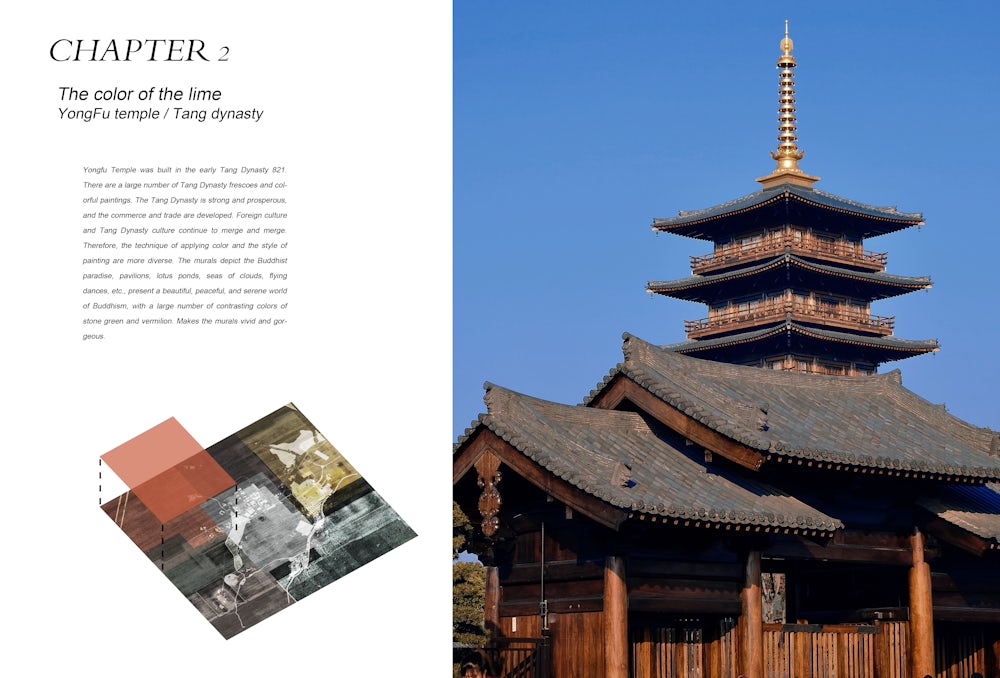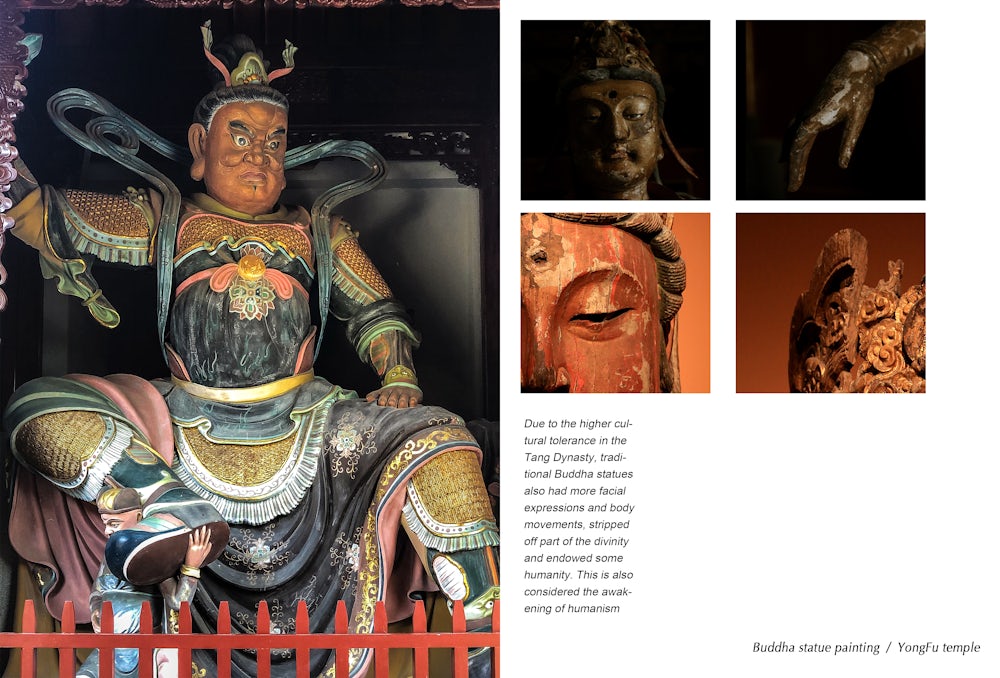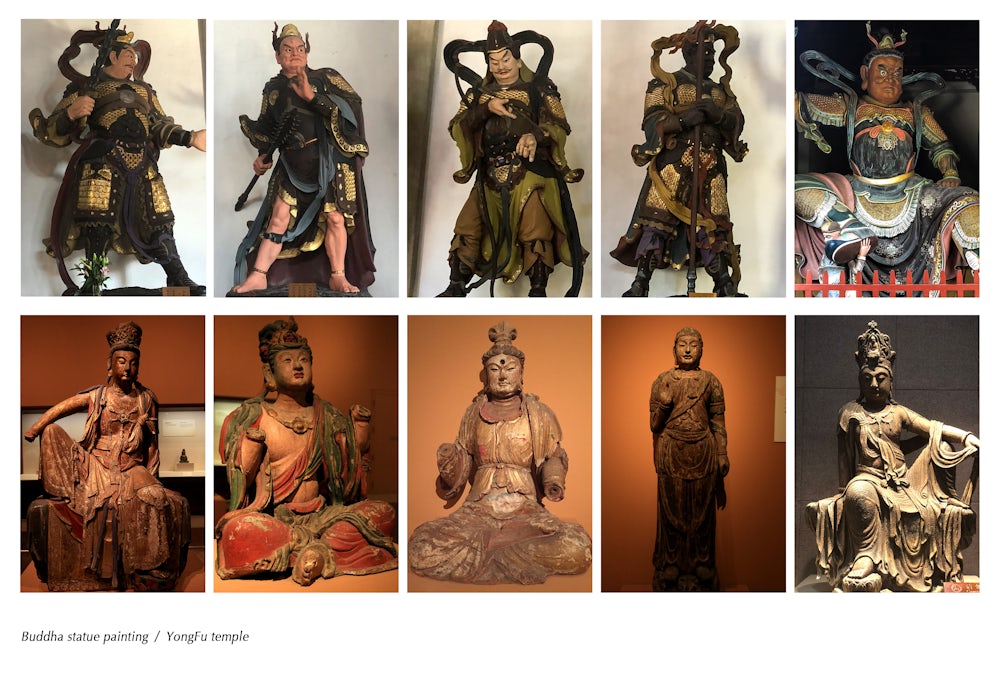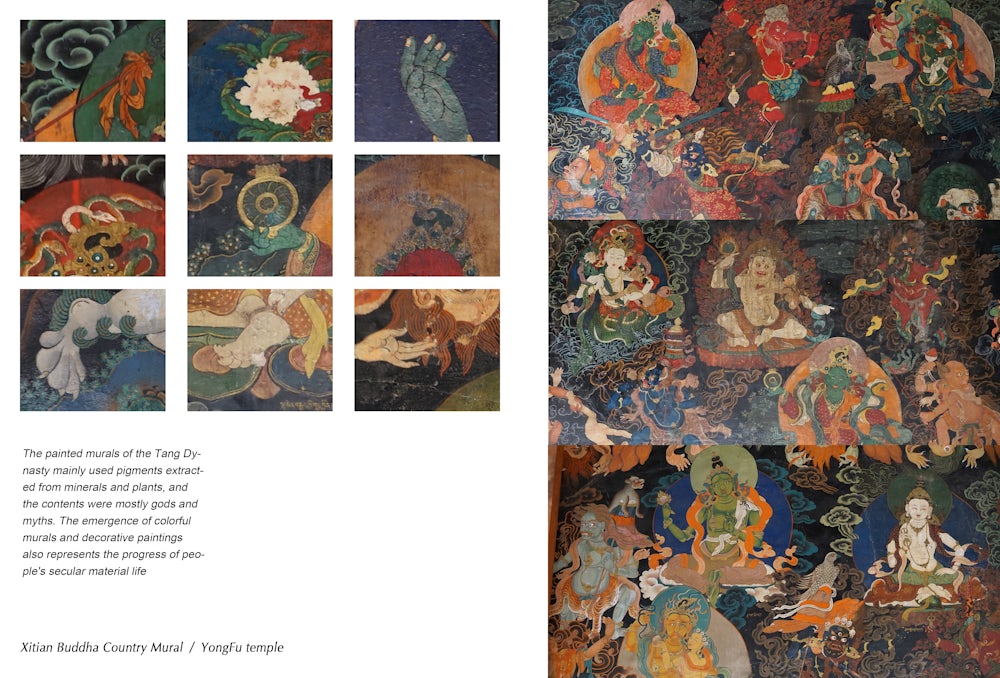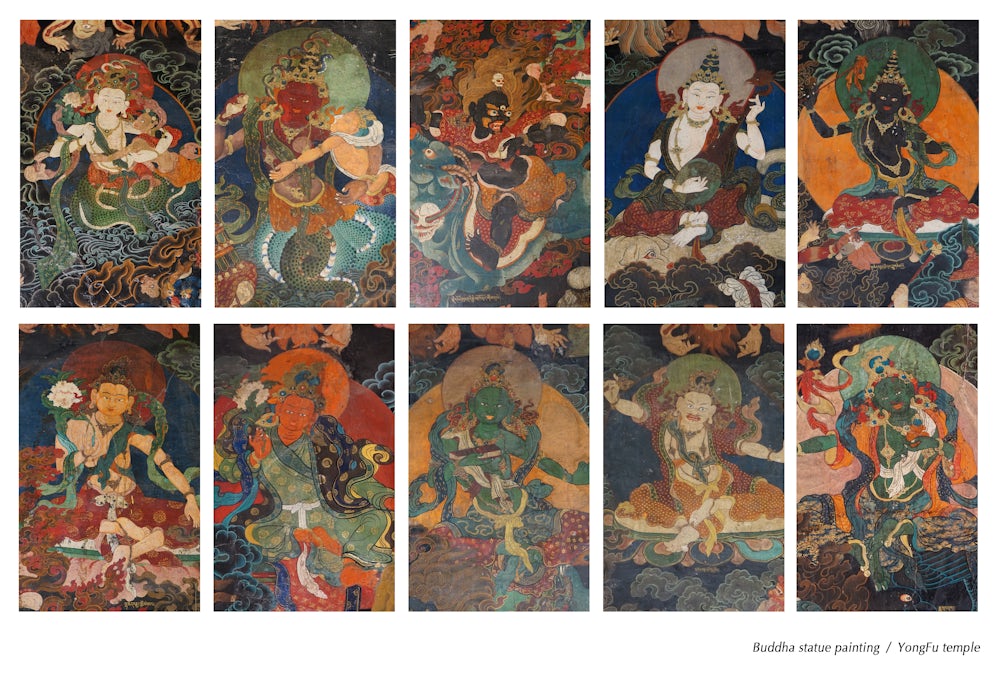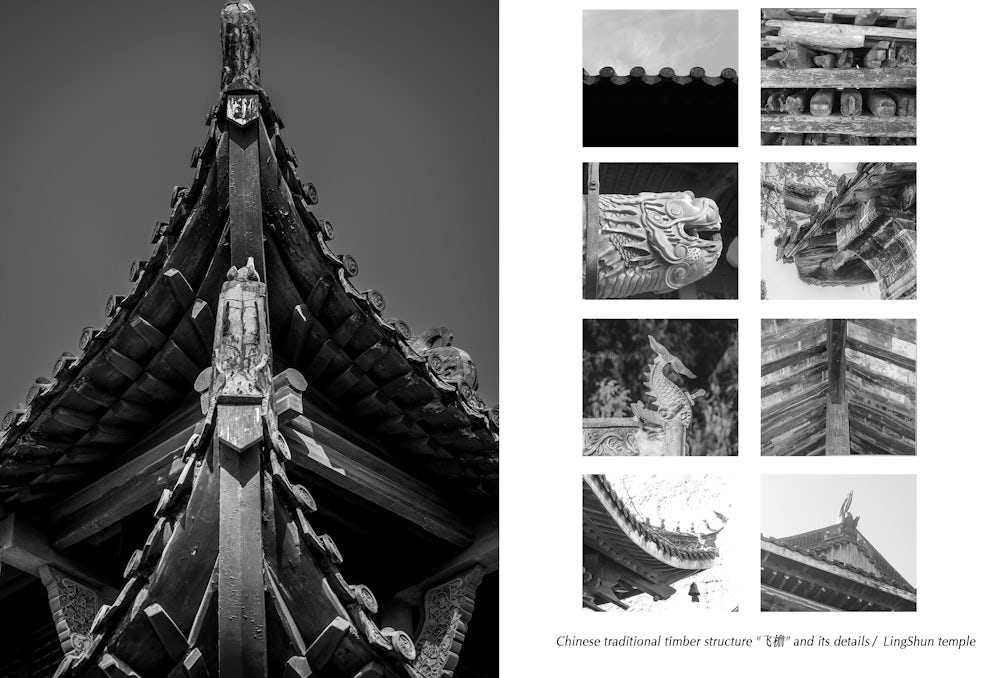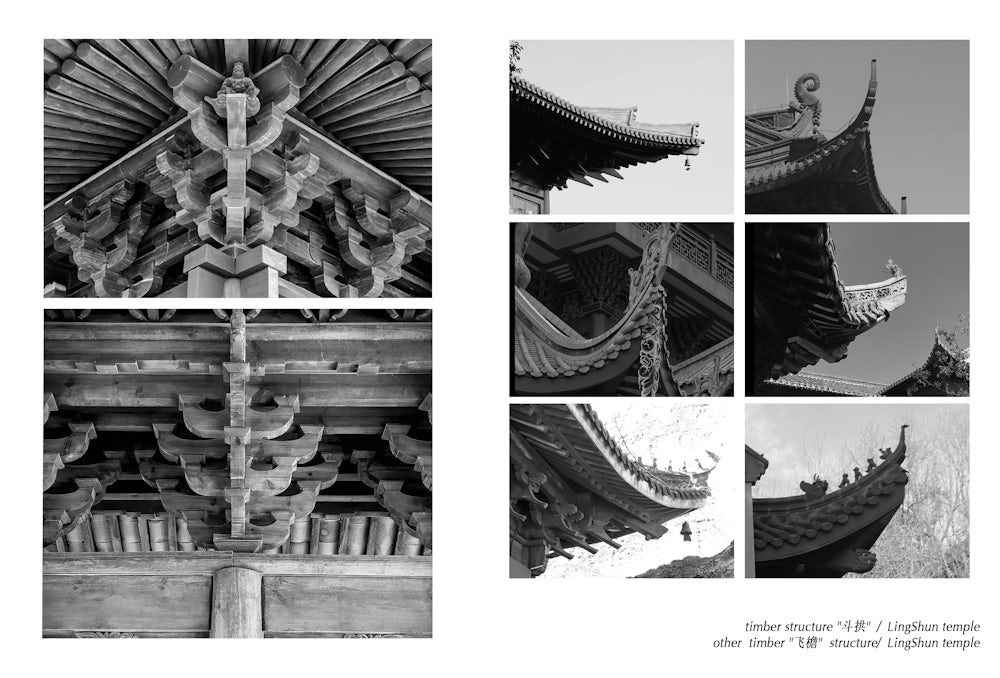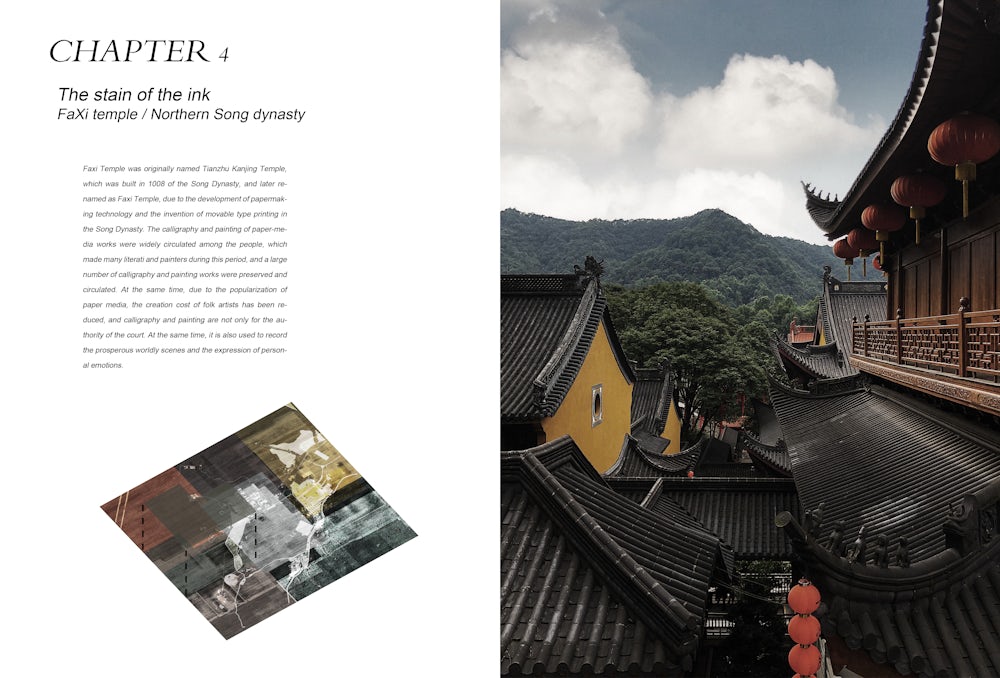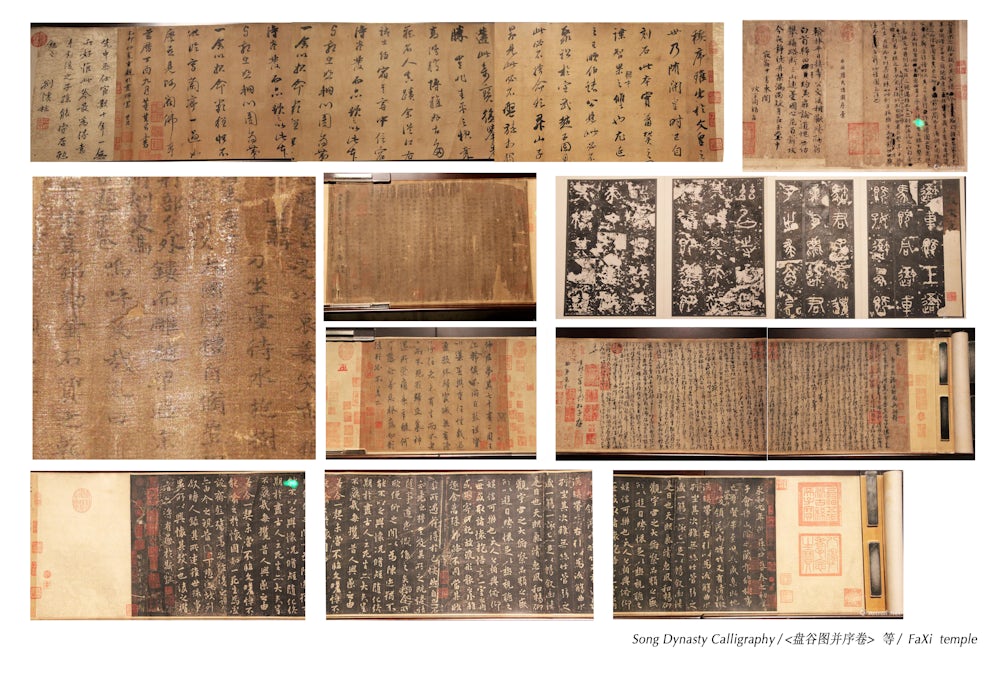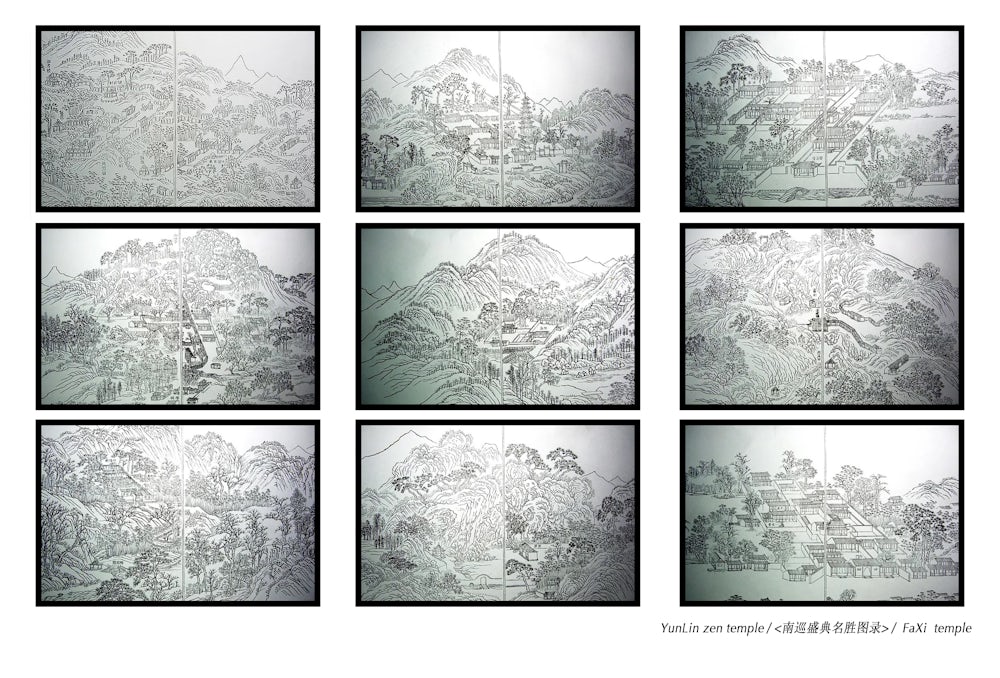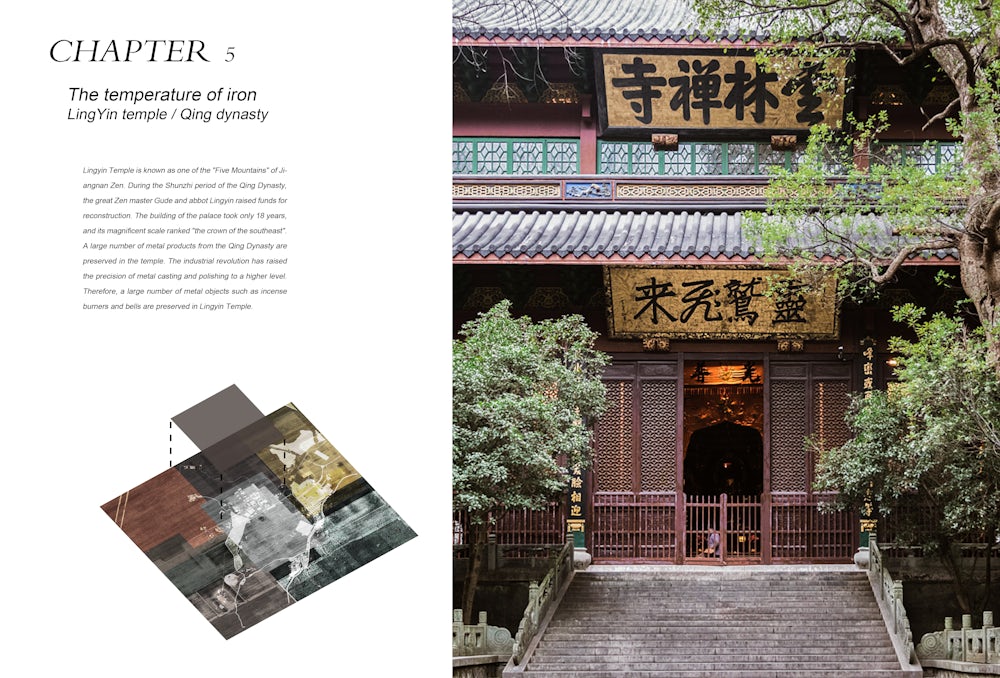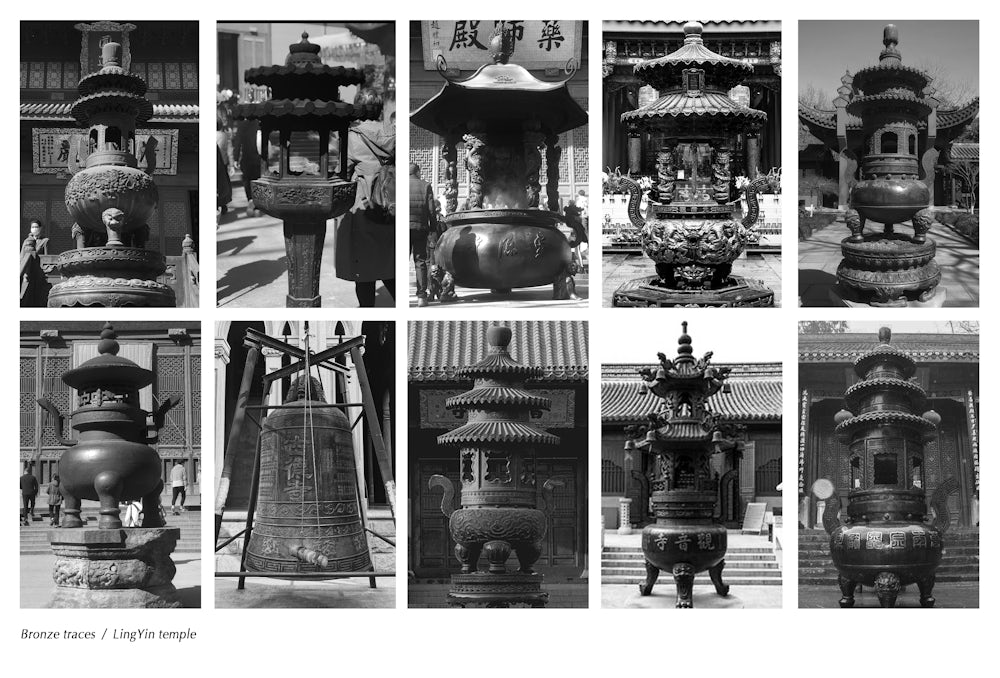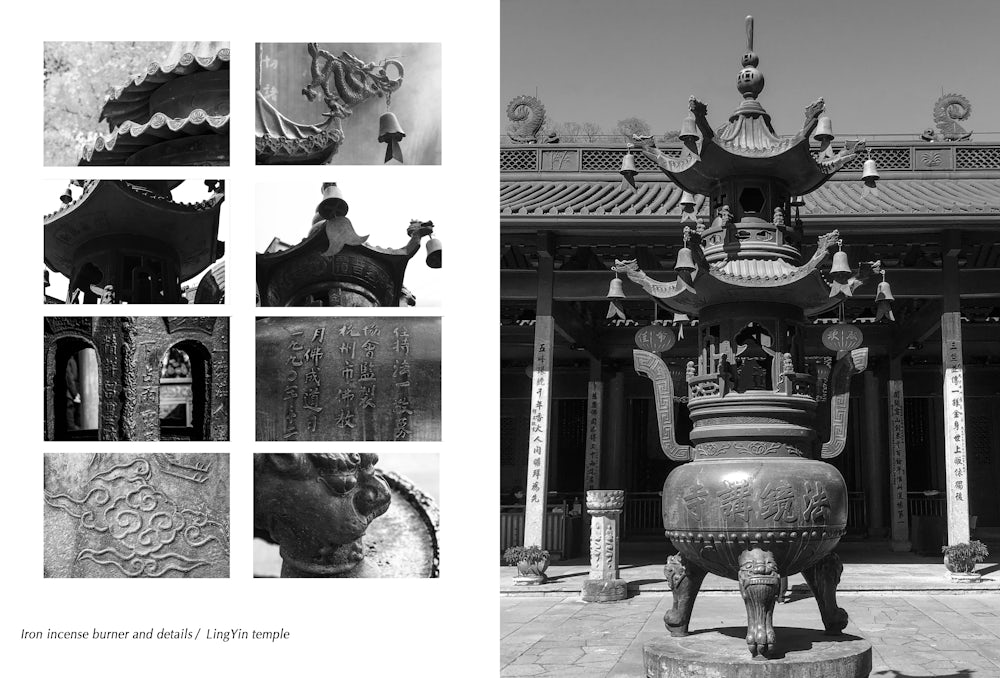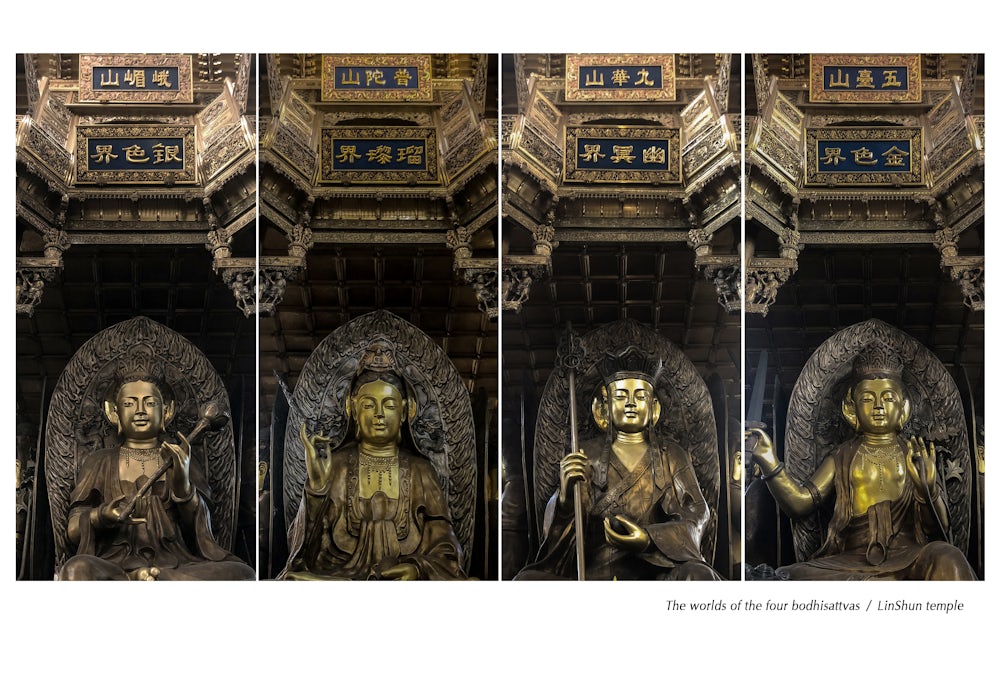In the past two decades, Chinese cities suffered rapid development with urban areas rapidly changing causing a rupture in culture and urban memory. In the city of Hangzhou, the impact of such developments is very palpable, making it a perfect ground for this experience. However, in a mountain nearby, with ancient temples and statues of different dynasties scattered in its vicinity, there exists a continuous register of history. Every time a new dynasty is created, a new temple is built to show the ruler's authority without the destruction of the previous temples. Even though the temples are going through their own renovations, history is preserved. It is because of the particularity of religious buildings that there are various temples from different periods that exist on this mountain.
The project looks at this ancient mountain complex that is closely related to the city's history as a slower register of the changes in the city and that is more spatially organized. I use photography to document and record material and historical traces and in parallel compile different archival material concerning the temples. Conceived as a book, the photographs and archival documents are structured around five chapters highlighting a specific material or element in each temple: stone, lime color, timber, ink, and iron.



